Parylene is considered by many to be the ultimate conformal coating for protection of devices, components and surfaces in electronics, instrumentation, aerospace, medical and engineering industries. Parylene is unique in being created directly on the surface at room temperature.
A primary function of all conformal coatings is maintaining sufficient insulation and avoiding dielectric breakdown while protecting printed circuit boards (PCBs) and related electronic assemblies. Providing a completely homogeneous coating surface, parylene (XY) conformal coatings are exceptionally corrosion-resistant, dense and pinhole-free. Among other performance advantages, ultra-thin XY protective films offer superior dielectric properties. Dielectric substances maintain electrical insulation, simultaneously transmitting electricity without conduction. They have the potential to store energy because they support electrostatic fields that release only low levels of thermal energy.
To work effectively, a conformal coating’s breakdown voltage, defined as:
Maintaining these performance factors is necessary for ongoing PCB-operation; preventing dielectric breakdown (DB) is essential. DB results from a buildup of electrical charge within a PCB that surpasses a coating material’s dielectric strength (DS – its electrical performance limit). In such cases:
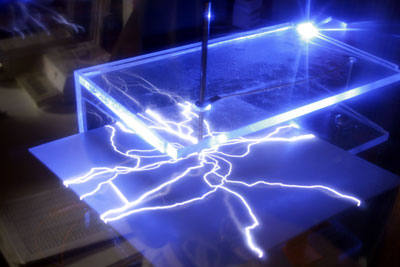
Obviously, avoiding DB is essential for effective conformal coating, requiring suitable DS. XY films generate increased dielectric strength between conductors enabling smaller, more compact PCB design.
DS is a measurement of a conformal coating’s insulation effectiveness. Parylene's lower dielectric constants in comparison to liquid conformal coatings indicate its
Conformal coating materials demonstrating fewer extractible ionic impurities and greater hydrophobicity have superior DS. In terms of measurement, higher-valued ratings (7,000) indicate a particular coating material will resist dielectric breakdown better than one whose DS value is lower, (2,000). Compared to liquid coatings, parylene’s higher DS shows considerable advantage generating appropriate dielectric protection for PCBs. In addition, XY’s lower dielectric constants (DCs) represent diminished concentrations of electric flux, resisting the impact of current fluctuation within the assembly. One of parylene’s most significant advantages is the ability to withstand substantial electrical activity, maintaining its structural integrity and assembly performance. Both DS and DC values vary according to coating material, and can also vary within material type. Table 1 provides DS/DC values for parylenes N and C, and the major liquid coatings.
TABLE 1: Dielectrical Properties of Conformal Coatings
| Coating Type | Dielectrical strength V/ml |
|---|---|
| Parylene N | 7,000 - 2.65 |
| Parylene C | 5,000 2.95 - 3.15 |
| Acrylic | 1,500 3.25 - 4.35 |
| Epoxy | 2,200 3.30 – 4.60 |
| Silicone | 2,000 3.10 – 4.20 |
| Urethane | 3,500 3.80 – 4.40 |
DC values exceeding 3.0, indicate inappropriate molecular response to the alternating current/field, and diminished ability to perform under conditions of electrical stress and fluctuation.
XY’s DC-ratings are better than those for liquid coatings, representing enhanced performance. The same results pertain to DS; parylene ratings are better in all cases, compared to wet conformal films, whose lower values indicate excessive thermal generation, undesirable for sustained conformal coating function.
DC readings for other parylene types range between 2.25 - 3.15. In all cases, these readings respond to alterations in Hertz (Hz) value -- a unit of change-frequency for alternating current (AC). Regarding parylene types,
Dielectric loss registers dissipation factor, for levels of internal heat within conformally coated substrates; a rating of 0.1 or less is required for longer-term maintenance of coating adhesion and performance. Coating ratings respond to alterations in Hz level. Here again, XY performs admirably:
In both cases, XY coatings exceed professional performance standards for dielectric control. As a lower DC conformal film, parylene’s weakly-bonded molecules produce dependable buffers between a PCB and its operating environment. Polarized by electrical charges, XY
To further illustrate, the wet coatings identified on Table I each register DCs larger than 3.0. Thus, the possibility of circuit-speed variance increases, a development that can interfere with the operation of any higher frequency component. In addition, DS of liquid coatings is lower, reducing their ability to maintain performance – adhesion to assembly surfaces and consistent component protection; they are more likely to break down during prolonged contact with intense electrical activity. Unlike XY films, those composed of acrylic, epoxy, silicone or urethane are prone to dielectric breakdown and current conduction, especially with the passage of time. Parylene reliably sustains an assembly’s electric field without conducting electricity, expediating the non-static transmission of electrostatic power throughout the PCB.
Effectiveness Explained
Parylene (XY) polymer conformal films are recognized for their exceptional range of desirable functional properties for coating printed circuit boards (PCBs) and similar electronics. Beneficial parylene properties include biocompatibility, chemical/solvent resistance, dielectric/insulative reliability, and ultra-thin pinhole-free film thicknesses between 1-50 μm. They also generate complete surface conformability, regardless of substrate configuration, exceeding the coating capabilities of liquid conformal materials, such as acrylic, epoxy, silicone and urethane.
Despite these advantages -- which allow XY to effectively encapsulate virtually all surfaces with durable protective conformal film – one question about its performance cannot be satisfied:
 Can parylene be used as a standalone enclosure?
Can parylene be used as a standalone enclosure?
XY can effectively enclose any object or form fitting in the deposition chamber; however, it cannot standalone. Parylene requires a surface to adhere to before it can be successfully applied as conformal film.
Standalone Enclosures
For a device or object to standalone structural independence is required, to support
In this regard, a standalone object sustains and preserves its operational purpose, as a separate entity, exclusive of external support or power.
An enclosure is a physical construction that circumscribes an object, completely surrounding its structure, defining its internal spatial limits by its own material boundaries.
By this definition a standalone enclosure is a manmade (basement, courtyard) or natural (cavern, tree trunk) structure that requires no secondary aid to maintain and protect its position. This basic condition eliminates XY’s standalone abilities. Much has to do with parylene’s chemical vapor deposition (CVD) method of film application.
While CVD thin-film deposition techniques generate a versatile platform for a wide range of parylene coating applications, its procedural requirements also terminate any chance of using XY to create independent standalone enclosures. Completely excluding the liquid phase of pre-synthesized wet coatings, CVD polymerization synthesizes truly conformal protective film in-process. It does so by
These procedures are followed by rapid cooling, to between -90º and -120º C, helping to solidify the coating while removing residual XY materials from the substrate. The result is uniform film thickness conforming completely to the substrate, regardless of substrate topography, with excellent chemical, dielectric barrier and moisture protection, among many other performance benefits.
CVD processes can compel parylene to provide complete and conformal encapsulation of three dimensional objects. XY does this by attaching to the targeted surfaces, including those already assuming a standalone enclosure format.
But if the question is:
Can parylene be used as a standalone enclosure?
The answer is no.
To work at all – adhere to a substrate and provide ultra-thin conformal protection – XY must undergo CVD conversion, from a powdered dimer to a vaporous state. Parylene only acquires its coating capacity after infiltrating a substrate’s surface in a gaseous form, providing protection both below and above the substrate’s surface. As a vapor, XY can completely cover – encapsulate -- the flattest surface or larger structures of virtually any shape. In doing so, it encloses the targeted surface and form.
However, it cannot standalone precisely because it must be a vapor to provide conformal coating and, as such, simply lacks the physical constitution to provide a stable stand-alone molecular structure and shape. After it solidifies as a protective film, it has already surrounded, and infiltrated the surface of, the selected substrate. As such, it is already part of something else, and does not standalone, despite enclosure of the object.
Parylene vapor must form around something to generate conformal coating; standalone is not a possibility. If no target is provided to receive parylene CVD application, XY will remain in a gaseous form, adhering to whatever is available or free-float, without a material shape of its own. While it is adaptable for enclosing pretty much any physical configuration, including standalone structures, parylene lacks the material consistency to become standalone by itself.
In the future it may become possible to either:
A Measure of Material Ductility
For conformal coatings, elongation is a measure of material ductility -- a specific coating's ability to undergo significant plastic deformation before rupture. A coating’s yield elongation is the maximum stress the material will sustain before fracture. Thus, computed parylene (XY) elongation measurements represent the total quantity of strain the conformal film can withstand before failure. While elongation is equal to a material’s operating failure strain, it has no exclusive units of measurements. Typically,
The result is a figure for material elongation expressed as a percentage (%), showing how much bigger the object is after deformation has completed. Signified by the Greek letter ε, strain measures a material’s deformation/extension when subjected to a force or set of forces. Five percent (5%) elongation is considered significant; conformal coating needs to withstand that level and more for reliable, ongoing performance.
Annealing promotes elongation. It removes a coating’s internal stresses by heating the material, followed by slow-cooling. In annealing, atoms migrate in the crystal lattice, lowering the quantity of dislocations, while altering coating ductility; the coating recrystallizes as it cools, increasing ductility.
Tensile testing is often used to determine elongation at break. Synthetic polymer materials generally show enhanced ductility; this is true for parylene, widely used for conformal coatings, protecting performance of printed circuit boards (PCBs) and related electronics within a wide range of uses. XY typically records high levels of elongation to failure, imperative for dependable conformal film protection.
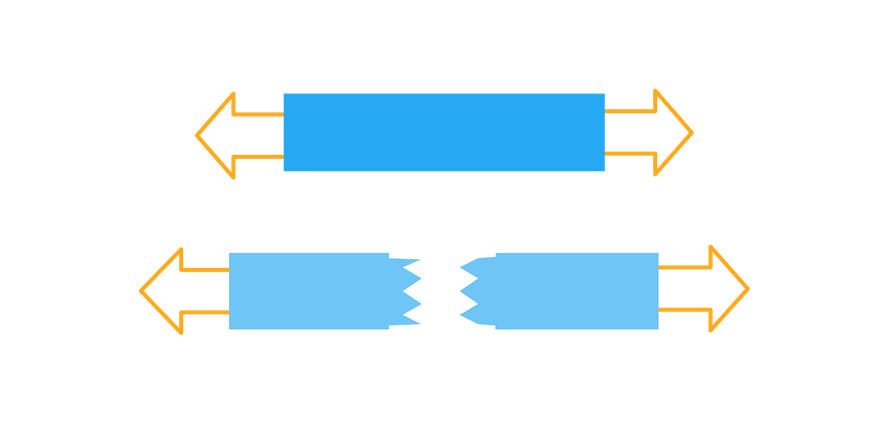
Using a chemical vapor deposition (CVD) application process, one of parylene’s major advantages is room-temperature deposit and cure; unlike liquid coatings – resins of acrylic, epoxy, silicone and urethane -- it requires no separate curing procedure. This factor also bypasses the substantial temperature excursion associated with liquid conformal films. Implemented in a vacuum chamber, CVD generates inherently cleaner film application.
Tests of parylene’s elongation capabilities have provided a variety of generally positive results, especially in comparison to liquid coatings:
Each parylene type has different physical/mechanical properties affecting its elongation performance. Table I provides a brief resume of these factors for parylenes N, C and D.
Table I: Elongation and Related Properties for Selected Parylenes
| Type | N | C | D |
|---|---|---|---|
| Elongation at Break, % | 40 | 200 | 10 |
| Yield Strength, psi | 6,300 | 8,000 | 9,000 |
| Yield Strength, MPa | 2,400 | 3,200 | 2,800 |
| Tensile Strength, psi | 6,500 | 10,000 | 11,000 |
| Tensile Strength, MPa | 45 | 69 | 76 |
| Melting Temperature, °C | 410 | 290 | 380 |
| Linear Coefficient Expansion | 6.9 | 3.5 | 3.8 |
This data shows disparities between parylene type and elongation performance/factors affecting elongation. Types D (10%) and N (40%) have significantly lower elongation to break properties than C (200%). However, even the lower figures of D and N compared to C are superior to those of liquid coatings like acrylic (5%) and epoxy (8%), whose lesser elongation properties at greater coating thicknesses render them much more brittle and breakable than parylene for most coating purposes
Points to Consider
With reliable moisture barrier properties, parylene (XY) conformal coatings generally have a hydrophobic surface when deposited onto substrates, causing liquids to form separate droplets on film surfaces. While this outcome is useful for many XY applications, greater hydrophilic response, wherein XY molecules form ionic or hydrogen bonds with water molecules, can also be desired. This can be achieved by applying glue or epoxy on top the deposited parylene; surfaces acquire enhanced hydrophilic properties, becoming more wettable.
Enhanced Surface Hydrophilicity and Other Issues
Application of glue to parylene film surfaces will often add to its surface hydrophilicity. These procedures have value for biomedical purposes, including use with implanted devices with Parylene C coatings. The technique of photoinduced phospholipid polymer grafting on XY coatings adds advanced lubrication and anti-biofouling properties to the film. In these cases, poly(2-methacryloyloxyethyl phosphorylcholine (MPC)) adhesives can be attached to XY coatings to enhance the surface’s lubrication and antibiofouling properties, limiting accumulation of microorganisms on the implanted device’s wetted surfaces. While these procedures have proven successful, care has to be taken to assure the consistency of the bond between the XY and the glue, which may be weakened if exposed to thermal cycling during operation.
Problems can also emerge from delamination and/or moisture ingress at the interface of the glue and parylene. Adhesion between glue/parylene may diminish under wet conditions consistent with biomedical implanted devices; lowered adhesion between parylene/substrate can develop as well, if barrier properties are further weakened. Oxygen plasma treatment is often cited as better-suited for enhanced surface hydrophilicity.
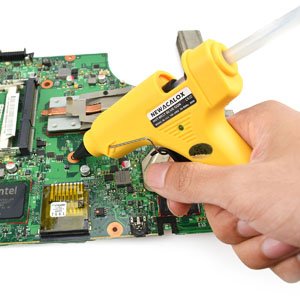
Parylene itself can be used as a bonding agent for semiconductor wafers employed for integrated circuitry useful to printed circuit boards (PCBs) and related assemblies; crystalline silicon is typical wafer material. Bonds of parylene with itself, and to silicon, have been achieved, with:
However, dielectric bonding glues combining two polymers – such as benzocyclobutene (BCB) and polyarylene ether (PAE) (commercially known as Flare) – create better wafer bonds alone than when combined with parylene, limiting the utility of parylene/glue interface for these purposes. Moreover, this is a case of parylene being used as the bonding agent between two other substances (as a kind of glue), rather than glue being applied directly to parylene for specific purposes.
Masking Adhesives
Integral to surface preparation, the masking process protects assembly contacts and keep-out areas from the encapsulating effects of the parylene itself, which would suspend their operational capacities. Masking’s purpose is assuring selected assembly components are NOT covered by the applied parylene film, maintaining their performance functionality. Because XY’s:
Masking materials must thoroughly shelter the keep-out regions, without gaps, crevices or similar surface breaches, to provide reliable connector function after coating. Among basic masking materials are masking dots, tapes and contact pads, which generally affix to the component surface with a peel-able adhesive. Masking dots are small stickers fastened over the contact before coating is initiated. Masking tapes/contact pads generally employ one-of-two formats: (1) liquid peel-able latex masking materials, similar to dots, or (2) polyester or Kapton tape. All adhesive-based masking materials prevent coating ingress into the component. After XY application, the masking is carefully peeled or otherwise removed, as soon as possible after the parylene has dried, to prevent tearing the film, while exposing the contacts or other masked regions.
Masking prior to XY application is another process interface where glued adhesives and parylene interact, but does not represent a process where glue is applied directly to XY’s surface. Gluing to parylene is possible, but less-used; surface interface is not entirely reliable, often leading to delamination and other functional problems.
How it Protects
Unlike liquid coatings – acrylic, epoxy, silicone and urethane – parylene (XY) does not use wet method application. It can neither be brushed or sprayed onto substrate surfaces, nor will immersion – soaking the substrate in a bath of coating material – work. In addition, XY’s:
Parylene conformal films also cannot be formed by casting, due to low solubility in organic or other media, except at temperatures exceeding 175° C.
Because of these properties, and the specialized application methodology required to create XY conformal coatings, parylene provides exceptionally reliable abrasion resistance in most cases.
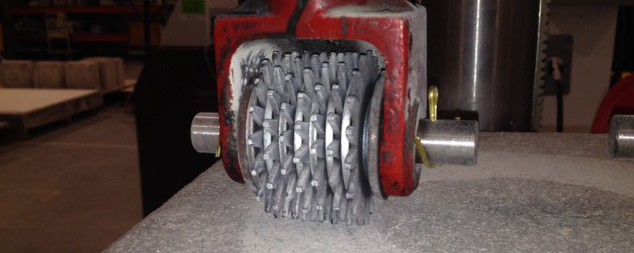
XY relies on a unique chemical vapor deposition (CVD) method of coating application. Depositing a film via CVD results in superior conformity compared with other deposition techniques, primarily because of the distinctive chemical interactions between the surface and the reactive compounds. Vaporized, the gaseous dimer is introduced into a vacuum chamber containing the assemblies to-be-coated. These may be printed circuit boards (PCBs), implantable medical equipment, backplanes, MEMS/nano devices, motor components, sensors or optical lenses, among a wide and proliferating range of products.
Unlike liquid coatings, which are pre-synthesized prior to application, XY synthesizes during CVD, attaching onto, and within, substrate surfaces. During CVD:
Thus, rather than offering simply surface conformal protection, parylene penetrates the substrate surface, generating additional security. Room temperature formation means the coatings are effectively stress-free, adding to the film’s abrasion resistance. XY’s excellent mechanical properties, and ability to withstand abrasion, begin with CVD.
The result is perhaps the strongest, most resilient of all commonly used conformal coatings. It is not true that once applied, XY is essentially indestructible, but parylene resists most normal types of abrasion. Chemically inert, and with a broad temperature range, it unlikely to corrode, despite micro-thin film coverings for many uses; protected above and below a substrate’s surface, XY coatings withstand persistent marring, scuffing, scratching, or other instances of rubbing away/wearing down, generally for the life of the assembly.
Once deposited, parylene impact resistance is high. Compared to the other coatings, XY conformal films are generally less than 2 millimeters (mm.) in thickness, averaging between .10 – .50 mms for many uses. The different types of parylene coatings -- N, C, D, F, etc. – vary somewhat in chemical structure and functional properties, but all possess very high dielectric strength (5500-7000 volts/mil), withstanding the effect of solvents while resisting abrasion, enhancing the film’s performance. In addition,
This is the result of polymer density and an increase in crystallinity.
Measured against wet coatings, XY conformal films offer high tensile and yield strength. This includes a physical hardness greater than epoxy or urethane, adding rigidity to a fragile component, while reducing the impact of operational vibration. Despite XY’s substantial wear resistance, persistent, prolonged use in applications characterized by repeated abrasion with harder materials is not recommended.
And remember, XY does not last forever. It can be removed if necessary. For instance, parylene conformal films can be removed by exposure to ongoing, extreme heat, although this process risks damaging components underneath. More effective removal methods are mechanically-based, requiring instruments of persistent, gentle micro abrasion for optimal results. Although effective, this method is costly and time-consuming. It should be noted, that XY’s chemical inertness, a basic property, shuts down chemical removal in the vast majority of cases, causing the need for thermal or micro-abrasive removal techniques.
The difficulty of removal combines with the need for specialized removal techniques, are indicative of parylene’s exceptional abrasion resistance.
Moisture Protection
Protecting printed circuit boards (PCBs) and similar electronics from the incursion of water is an essential responsibility of parylene (XY) conformal coating. Suitable XY permeation barriers assure no form of liquid passes through to underlying components and that the water vapor transmission rate (WVTR) is minimal. WVTR measures the level of water vapor migration through the applied barrier film, in terms of area and time. Optimal WTVR ratings are represented by lower numerical values. In comparison to liquid coatings, parylene typically provides lowest-level values, indicating better moisture barrier provision.
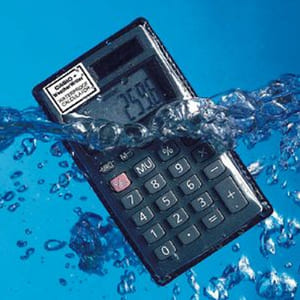
Acrylic, epoxy, silicone and urethane coatings can be more quickly affected by water, its vapor, and other sources of moisture, such as:
Demonstrating greater moisture barrier management, XY is also suitable film protection for bio-implantable medical devices that need to withstand the presence of internal sources of moisture within the body.
Of all XY types, Parylene C has the best water vapor barrier properties. Table 1 lists the WVTR of five XY types, as well as those for several liquid conformal coatings.
Table 1: WVTR Barrier Properties of Parylene and Liquid Conformal Coatings
| Polymer | WVTR (g·mm)/(m2·day) |
|---|---|
| Parylene C | 0.08 |
| Parylene N | 0.59 |
| Parylene D | 0.09 |
| Parylene F (VT-4) | 0.28 |
| Parylene AF-4 | 0.22 |
| Epoxy (ER) | 0.94 |
| Polyurethane (UR) | 0.93 |
| Silicone (SR) | 0.89 |
These data demonstrate the superiority of all parylene types as a barrier against water vapor incursion, in comparison to major liquid coatings. Types C and D have particularly low WVTR-levels. However, it should be noted that some passage through the XY film will eventually occur, suggesting incomplete water-proofing over time.
Table 2 provides further substantiation of Parylene C’s superior moisture barrier performance compared to ER, UR, SR and TeflonTM materials, following immersion in saline solution of sodium chloride and water.
Table 2. Resistance of Different Polymers to 0.9% Saline Solution
| Polymer | Coating Method | Layer Thickness (microns, μm) | Time Until Total Breakdown |
|---|---|---|---|
| Parylene C | CVD | 25 | >30 days |
| ER | Dip Coating | 100 ± 25 | 6 Hours |
| UR | Dip Coating | 100 ± 12.5 | 6 Hours |
| SR | Dip Coating | 75 ± 12.5 | 58 Hours |
| TeflonT™ | Spraying | 75 | 6 Hours |
Data in Table 2 once again shows parylene’s water barrier superiority, requiring far longer to be breached by a saline solution (30+ days) than any of the liquid coatings and TeflonTM, at lesser coating thicknesses, 25 μm. Of the other coatings, only SR exceeds 6 hours, offering 2 days/10 hours protection. If the XY coating were expanded to levels of the other listed coatings (75+ μm), breakdown time would commensurately expand, to 90 days or more. However, cases where protected devices would be expected to function in a salt solution for more than 30 days are rare; specialized XY-coating procedures could assure the parylene conformal film would remain functionally waterproof under most operating conditions.
Products that depend on no-fail functionality -- such as for aerospace/defense, industrial, medical, and telecommunications – require stringent water barrier performance for enclosures, gaskets, and hermetic sealing. Parylene exceeds liquid coatings for water barrier protection. XY’s lesser weight and thinner coats also improve fuel efficiencies for automotive/aerospace applications and internal positioning for biomedical uses. In this respect, parylene qualifies for Class B specification, according to IPC-CC-830B, as a hydrolytically-stable conformal coating, requiring higher levels of moisture insulation resistance and humidity-aging testing. Regarding any moisture penetration and interference, this covers operating situations where acid rain, aggressive solvents, atmosphere pollutants, high humidity, intermittent immersion, persistent rain, snow and salt fog, as well as internal environments with high moisture/liquid content are commonly encountered.
Table 3 shows water absorption rates and temperatures for Types F, C and D.
| Parylene Type | Water absorption | Water vapor temperature @ 38°C, g.mm/(m2.j) |
|---|---|---|
| F | 0.01%/24 hours | 0.32 |
| C | 0.06%/24 hours | 0.10 |
| N | 0.02%/24 hours/td> | 0.25 |
Once again, Parylene C demonstrates the highest level of water repulsion, closest to complete device waterproofing.
To review, moisture barrier properties of the parylenes which support conditional water-proofed performance include:
Will parylene make your product completely waterproof?? Probably not, at least under the most extreme conditions. If an XY-coated device was submerged at the bottom of the ocean (or your kitchen sink) for an extended period – months or more – it may not remain dry, rendering its continued functionality questionable. It might continue to work, but there’s a distinct probability it wouldn’t. However, this is an unlikely scenario. Parylene’s CVD-generated protection – which provides internal as well as external security – repels water and other sources of moisture with exceptional barrier control, under an extensive range of operational conditions, making it virtually waterproof for the vast majority of foreseeable performance circumstances. Specialized XY-coating measures can be engineered for operating conditions where greater-than-average exposure to moisture are expected.